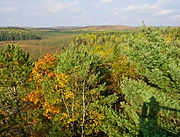CRALLÉ
Travel Photographer
chasing the essence
info@garycralle.com | Images & text © 2025 Gary Crallé | All rights reserved
Tom Thomson - Death in Algonquin
12:30 noon, July 8, 1917. Algonquin Provincial Park. Tom Thomson is seen leaving Joe Lake Dam in his canoe, heading for Tea Lake Dam or West Lake. It will be the last time anyone says they saw him alive and the start of a haunting mystery.

The vastness of Algonquin can be intimidating. Even today, the park interior remains inaccessible except on foot or by canoe. This is a wilderness area 1/5th the size of Switzerland. Sitting on a bump in the Canadian Shield four hours’ drive north of Toronto, it’s a rough gem despite its current status as Cinderella turned beauty queen by popular vote
i.e. it’s packed during leaf peeping season.



The Algonquin Visitor Centre has a fab viewing platform of the surrounding landscape. Free exhibits about the park are to the left off the entrance hall; a cafeteria is just past the info desk. Out of sight in the basement are collections of historic artifacts, wildlife and natural resources being catalogued by the staff. One of Tom's canvas tents is neatly rolled on a shelf.




Speaking of tents, my partner Lis and I did some modest camping on one of our research trips. In the middle of the night a shadow on the tent wall grew from raccoon to bear size. When thin fabric is all that separates your head from sniffs and snorts three inches away, you don't make any sudden moves. Next morning the ranger told us it was a young bear known to be visiting campsites out of curiosity. Tom had his encounters too, once sharing a berry patch with a bear.

Algonquin was and still is an artists’ paradise that Tom called home — forest, lakes, rivers and open skies. He loved the challenge of capturing the majesty and brilliance of it all in every type of weather, with spring and fall his favourite seasons.

[Paintings courtesy of Wikipedia]
To the west at km 20 on Hwy #60 the Algonquin Art Centre
has a new interpretive walk on Thomson's life and work in the park.
Here manager Joel Irwin runs a high quality gallery of original art.


Tom's painting style was quick, bold and precise. Lismer said Thomson "could smell the colour of ice." The beauty was in using firm strokes of colour to capture the essence of scenery and individual subjects like the red Pointer boat at the park's logging museum. A painting of these boats titled Bateaux resides at the Art Gallery of Ontario.


Sometimes Tom sketched on birch squares; mostly he painted on 8 ½” x 10” wooden boards and a paint box easel. Nearly all of his work was done within a geographic triangle formed by Algonquin, Georgian Bay and Huntsville.
His career would span only 5 years. At various times Tom painted in Algonquin with a number of future Group of Seven members, exhibiting his work at venues in Toronto, Halifax and Montréal where he sold sketches for $15-25 and paintings for $200-300.
Some large purchases by the government of Ontario and the National Gallery of Canada made his “eccentric artist” life more sustainable.
In 1912 he would meet Dr. J.M. MacCallum, an ophthalmologist and art lover. As a financial partner in the studio for painters MacDonald, Jackson and Harris, MacCallum supports and encourages this small group of struggling artists, counting Tom among them.
On his trips between Algonquin and Toronto, Tom visits his sweetheart Winifred Trainor in Huntsville. Speculation is that a pregnancy foretold an early marriage for which Tom would need money.

12:30 noon, July 8, 1917 Tom sets off in his Chestnut canoe.
July 16 Tom's body is spotted floating face down in Canoe Lake. There is a gash on his forehead. His legs might have been tangled in fishing line. The body has been in the water for several days and is beginning to decompose. That night guides keep watch over Tom’s body by campfire on Wapomeo Island. A hasty burial is conducted overlooking the lake.
July 21 On the instructions of Tom’s brother, George, who arrives from a family visit to Owen Sound, an undertaker retrieves the body and ships it to the family burial plot in Leith. Speculation has always been rife as to whether this was actually done. The plot thickens as crucial evidence about what happened to Tom was either destroyed or lost during those 13 days between disappearance and possible reinterment.
Was Tom’s death an accident or a murder? Theories abound as to what happened, making this one of Canada’s great mysteries. A deathbed confession is reputed to offer a solution. Fact, fiction and fantasy intermingle, but for those who dig there is an answer.
1920 With inspiration stemming from Tom Thomson, the Group of Seven landscape painters is formed.



A memorial cairn with a sweeping view through the trees at Hayhurst Point sits on a hilltop above Tom's favourite Canoe Lake campsite.

